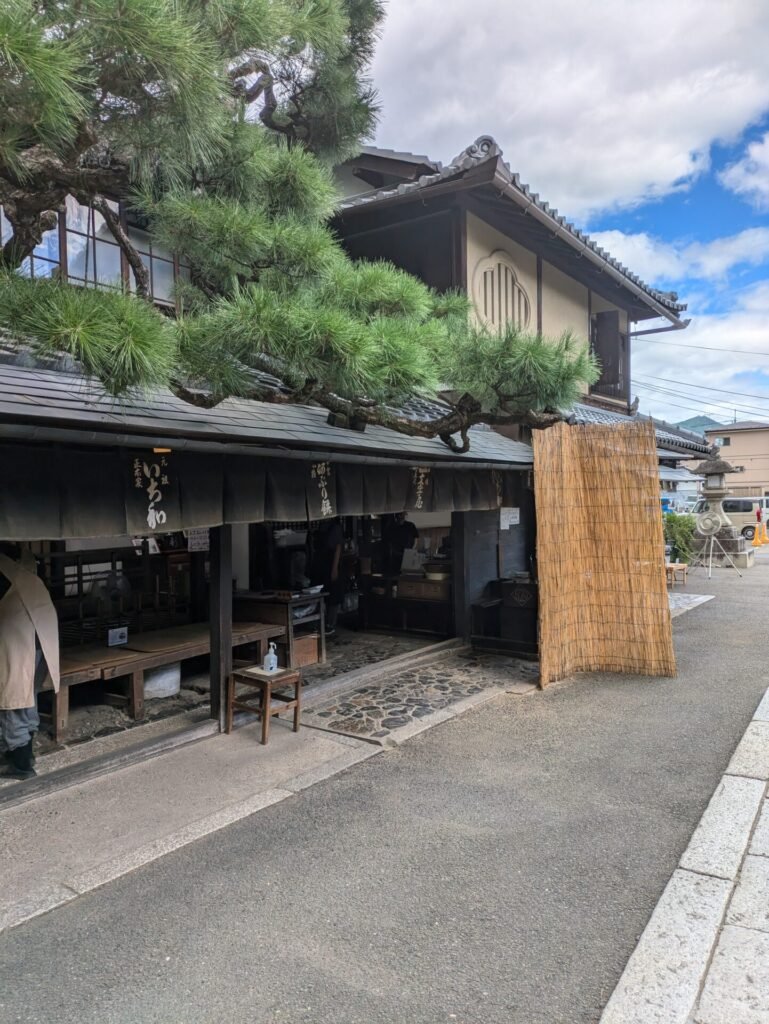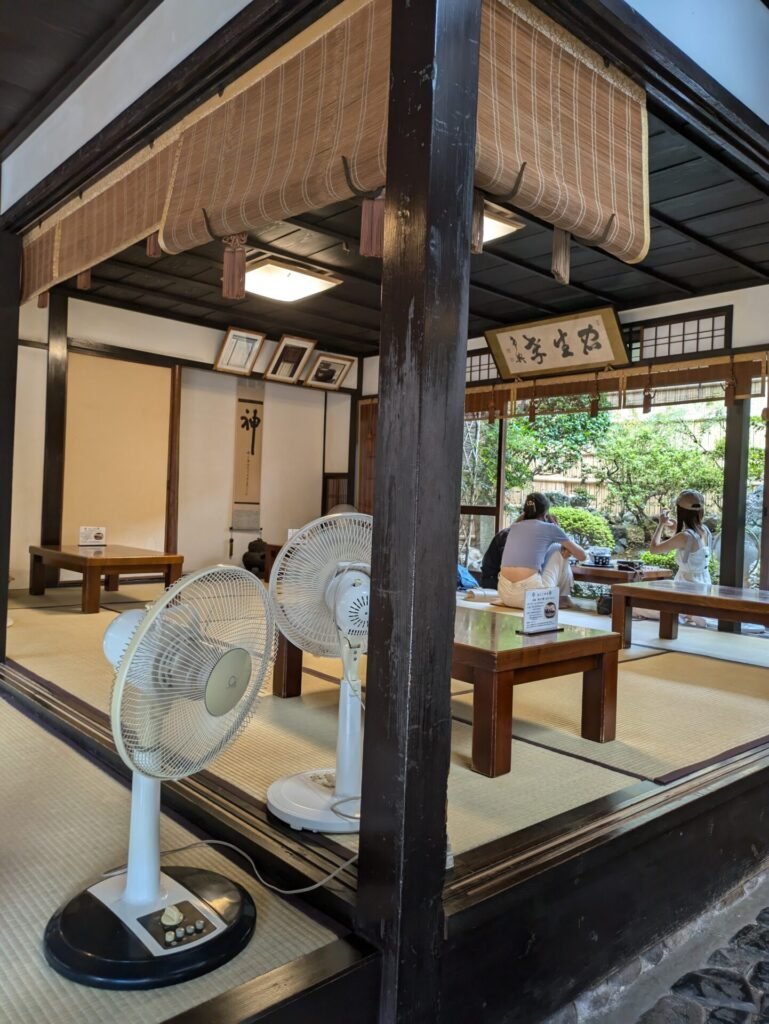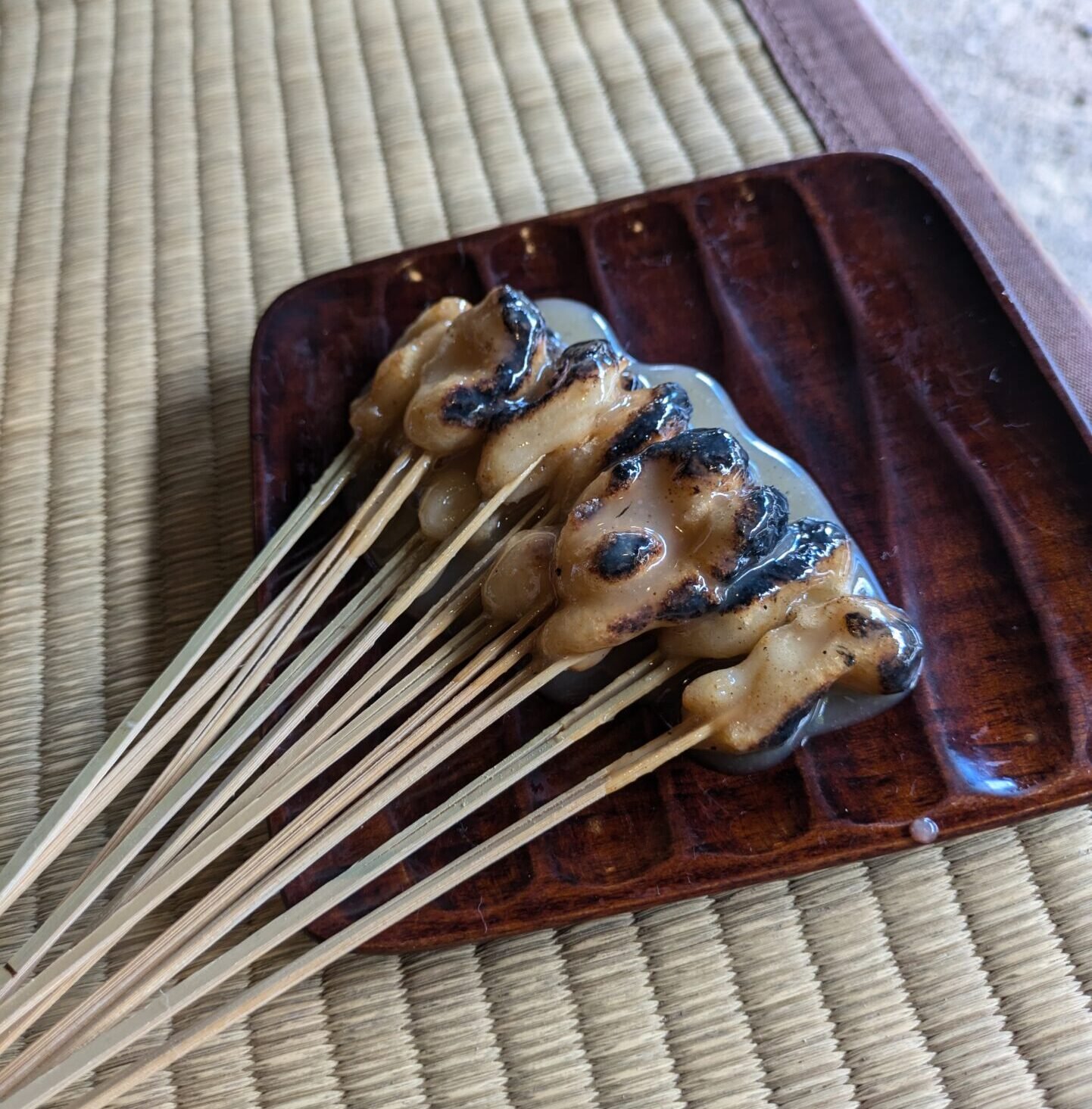A Harmony of Tranquility and Sweetness: Exploring the Deep Charm of Imamiya Shrine and Aburi-mochi in Kyoto
Imamiya Shrine: Kyoto’s Hidden Jewel
Nestled quietly in a residential area near Kinkaku-ji (Golden Pavilion), Imamiya Shrine is known as a sanctuary for longevity and protection against epidemics. The shrine was established in 994 to enshrine a deity of epidemics and conduct a ritual to quell a plague that was ravaging Heian-kyo (ancient Kyoto). The energetic voices of children from the adjacent kindergarten seem to symbolize the power of this sacred place.
Weaving a Thousand Years of Prayers: The History of Imamiya Shrine
The history of Imamiya Shrine dates back to the late Heian period. Born out of a crisis of epidemic disease, this shrine has continued to watch over the health and peace of Kyoto’s people ever since. While changing with the times, its essential role has remained unchanged, continuing to be the center of faith for local people up to the present day.
Beauty in Silence: Highlights of Imamiya Shrine
While many of Kyoto’s tourist spots are bustling with visitors, Imamiya Shrine exudes a quiet charm as a hidden gem. The vivid vermilion-colored gate catches the eye, while the shrine complex surrounded by greenery gives an overall quiet and serene impression.

Stepping into the shrine grounds, the quiet space surrounded by greenery further accentuates the weight of Imamiya Shrine’s long history and sacred atmosphere. The beauty of the carefully laid gravel in front of the main hall is also sure to captivate visitors.

For those who want to spend quiet, leisurely time away from the bustle of Kyoto, Imamiya Shrine is an ideal place. You can also enjoy the changes of nature through the four seasons, with particularly beautiful scenery during cherry blossom season and autumn foliage.
Access to Imamiya Shrine
Take City Bus Route 46 bound for Kamigamo Shrine and get off at “Imamiya-jinja-mae” stop. The shrine is right there.
A Thousand-Year-Old Taste: Long-established Aburi mochi Shops
When visiting Imamiya Shrine, you shouldn’t miss the two “aburi mochi” shops flanking the approach to the shrine. These are “Ichimonjiya Wasuke,” known as “Ichiwa,” and “Aburi-mochi Honke Nemoto Kazariya,” known as “Kazariya.”



The history of aburi mochi is surprisingly old. It is said to have originated when the first Ichimonji Wasuke offered “okachin” (kachi mochi), a specialty of Koryu-ji Temple, to the deity of Imamiya Shrine. Ichiwa was founded in the Heian period (1000), while Kazariya was established in 1637 during the Edo period, making them among the oldest confectionery shops in Japan.

As you walk along the approach, you might be tempted to enter the shops, drawn by the fragrant smell of mochi being grilled over charcoal. However, it’s recommended to first pay your respects at Imamiya Shrine and then visit the shops for a break. The sight of the proprietresses grilling mochi under the eaves of these historic, atmospheric shops is like a glimpse into the good old Kyoto of over a thousand years ago. Aburi mochi is reasonably priced at 600 yen for a plate of 13 pieces.
The taste is a perfect contrast between the smokiness of the charcoal-grilled surface and the rich white miso sauce. Although each piece of mochi is small, you can feel a firm elasticity. While enjoying the mochi with the provided tea, watching the worshippers walking along the approach and the skilled movements of the shop ladies, you’ll likely finish all 13 pieces before you know it. Whether you decide to order a second plate or try the other shop to compare tastes, these shops are perfect spots to rest your feet tired from walking around Kyoto.
Access to the Aburi-mochi Shops
Take City Bus Route 46 bound for Kamigamo Shrine and get off at “Imamiya-jinja-mae” stop. The shops are right there.
By visiting Imamiya Shrine and the aburi-mochi shops, you can experience both the quiet history of Kyoto and its traditional flavors at once. The solemn atmosphere of the shrine and the simple deliciousness of aburi-mochi offer a cultural experience unique to Kyoto.
